Dodge Journey: Removal, Installation
REMOVAL
REMOVAL - NGC CONTROLLER
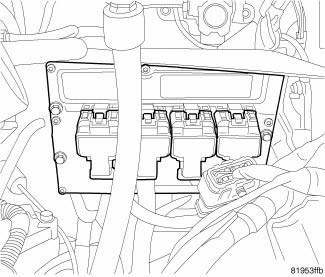
Fig. 39: Remove/Install PCM
NOTE: USE THE SCAN TOOL TO REPROGRAM THE NEW POWERTRAIN CONTROL MODULE (PCM) WITH THE VEHICLES ORIGINAL IDENTIFICATION NUMBER (VIN) AND THE VEHICLES ORIGINAL MILEAGE. IF THIS STEP IS NOT DONE, A DIAGNOSTIC TROUBLE CODE (DTC) MAY BE SET.
To avoid possible voltage spike damage to PCM, ignition key must be off, and the negative battery cable must be disconnected before unplugging the PCM connectors.
1. Disconnect and isolate the negative battery cable.
2. Unlock and disconnect the 4 electrical connectors at the PCM.
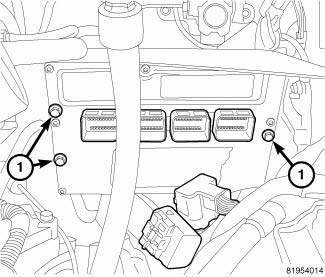
Fig. 40: Mounting Screws/Electrical Connectors
3. Remove the 3 fasteners (1) holding the PCM to the bracket.
REMOVAL - GPEC CONTROLLER (2.4L)
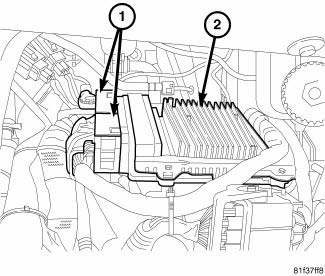
Fig. 41: GPEC Controller
- - Connectors
- - PCM
NOTE: USE THE SCAN TOOL TO REPROGRAM THE NEW POWERTRAIN CONTROL MODULE (PCM) WITH THE VEHICLES ORIGINAL IDENTIFICATION NUMBER (VIN) AND THE VEHICLES ORIGINAL MILEAGE. IF THIS STEP IS NOT DONE, A DIAGNOSTIC TROUBLE CODE (DTC) MAY BE SET.
To avoid possible voltage spike damage to PCM, ignition key must be off, and the negative battery cable must be disconnected before unplugging the PCM connectors.
1. Disconnect and isolate the negative battery cable.
2. Unlock and disconnect the 2 electrical connectors (1) at the PCM (2).
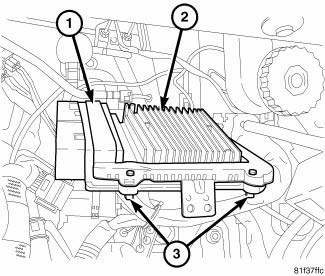
Fig. 42: GPEC Controller Mounting
- - Bracket
- - PCM
- - Bolts
3. Remove the 4 bolts (3) holding the PCM (2) to the bracket (1) and remove the PCM (2) from the vehicle.
INSTALLATION
INSTALLATION - NGC CONTROLLER
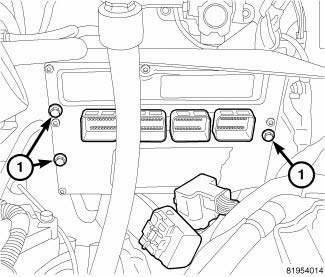
Fig. 43: Mounting Screws/Electrical Connectors
NOTE: USE THE SCAN TOOL TO REPROGRAM THE NEW POWERTRAIN CONTROL MODULE (PCM) WITH THE VEHICLES ORIGINAL IDENTIFICATION NUMBER (VIN) AND THE VEHICLES ORIGINAL MILEAGE. IF THIS STEP IS NOT DONE, A DIAGNOSTIC TROUBLE CODE (DTC) MAY BE SET.
1. Install PCM to bracket with 3 fasteners (1).
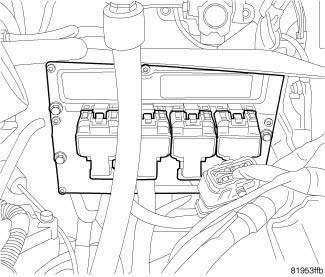
Fig. 44: Remove/Install PCM
2. Install and lock the 4 electrical connectors to the PCM.
3. Connect negative battery cable, tighten nut to 5 N.m (45 in. lbs.).
4. Use the scan tool to reprogram new PCM with vehicles original Identification Number (VIN) and original vehicle mileage.
INSTALLATION - GPEC CONTROLLER (2.4L)
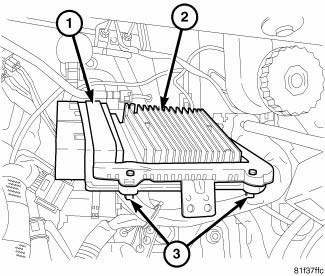
Fig. 45: GPEC Controller Mounting
- - Bracket
- - PCM
- - Bolts
NOTE: USE THE SCAN TOOL TO REPROGRAM THE NEW POWERTRAIN CONTROL MODULE (PCM) WITH THE VEHICLES ORIGINAL IDENTIFICATION NUMBER (VIN) AND THE VEHICLES ORIGINAL MILEAGE. IF THIS STEP IS NOT DONE, A DIAGNOSTIC TROUBLE CODE (DTC) MAY BE SET.
1. Install PCM (2) to bracket (1) with 4 bolts (3).
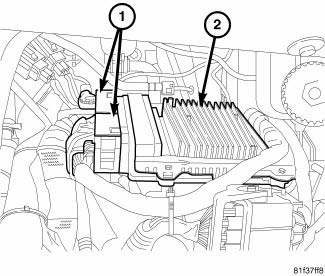
Fig. 46: GPEC Controller
- - Connectors
- - PCM
2. Install and lock the 2 electrical connectors (1) to the PCM (2).
3. Connect negative battery cable, tighten nut to 5 N.m (45 in. lbs.).
4. Use the scan tool to reprogram new PCM with vehicles original Identification Number (VIN) and original vehicle mileage.
 Standard procedure
Standard procedure
PCM/ECM REPROGRAMMING - GAS
Follow the instructions in order.
OBTAINING DIAGNOSTIC TROUBLE CODES
BULB CHECK
Key on: Bulb illuminated until vehicle starts, as long as all once per trip
(readiness ...
 Module, steering column
Module, steering column
DESCRIPTION
Fig. 47: Steering Control Module
This vehicle is equipped with a Steering Control Module (SCM) that is
internal to the left multi-function switch
housing (2). The left (lighting) mu ...
See also:
Description, Operation
DESCRIPTION
Fig. 2: Antilock Brake Module
- ANTILOCK BRAKE MODULE (ABM)
- HYDRAULIC CONTROL UNIT (HCU)
- PUMP/MOTOR
The Antilock Brake Module (ABM) is a microprocessor-based device which ...
Description
Fig. 142: Instrument Panel Outlets
There are two defroster air outlets (1) in the defroster grille (2) located
at the top of the instrument panel. The
airflow from the defroster outlets are dire ...
Description, Operation
DESCRIPTION
The battery cables are large gauge, stranded copper wires sheathed within a
heavy plastic or synthetic rubber
insulating jacket. The wire used in the battery cables combines excellent ...
